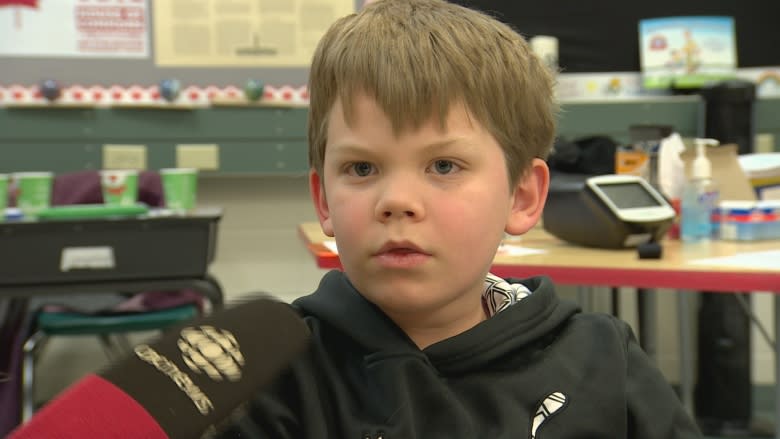New pilot project tests eyesight of Grade 2 students
The Alberta Association of Optometrists has launched a pilot project to help identify vision problems in Edmonton elementary students.
About one in four school-aged children have vision problems but many go undiagnosed, or are misdiagnosed as behavioural concerns.
"If a child's very far-sighted these kids can be misdiagnosed as having ADHD or being hyperactive," said Jada Hong, an Edmonton optometrist with the In School Eye Evaluation (ISEE) project.
"Sometimes these kids can mellow out and calm down just because the world is no longer as visually stimulating to them as it once was without the glasses."
More than 1,600 Grade 2 students from 67 schools in the Edmonton Catholic School District are part of the pilot project. Forty Edmonton public schools have registered to take part in 2017.
The Alberta Association of Optometrists has put up the $170,000 to cover the salary of Hong and an assistant, as well as the cost of the equipment.
"For many years we've heard from teachers and other health-care providers saying that children are falling through the cracks," said Dr. Aaron Patel, an Edmonton optometrist and coordinator of ISEE program.
"Only 42 per cent of children are getting eye exams before they enter school, but that leaves a large gap. They're going through school not being able to see and learn due to vision problems."
Under the pilot program, students are evaluated and parents are told if an eye health or vision issue is discovered.
The goal is to educate children and parents on the importance of eye health and regular eye exams, said Patel.
"If you didn't get your eyes checked there might be a problem and you might go blind, and you can't see, and you might hurt yourself," said PJ Videna-Isip, a Grade 2 student, at St. Benedict School.
Another student, Nathan Moreland, passed his eye evaluation with flying colours, and learned some interesting new facts.
"Our eyes see upside down but when our nerves bring the message to our brain, our brain flips it over and we can see properly," Moreland said.
The pilot project started Nov. 1 and will continue to the end of the school year.
Other similar programs have tried and failed in terms of getting parents to follow through and actually take their children for an eye exam, Patel said.
He noted that a survey found 61 per cent of Canadian parents mistakenly believed they would know if their child had a vision problem.
Program may expand in future
Under ISEE, the optometrist who has done the evaluation makes direct contact with the parents of a child identified as having a vision issue.
"We're really hoping that this is going to help with a better conversion rate between detecting problems and getting proper treatment", he added.
The long-term goal is to expand the program to test children across the province.




